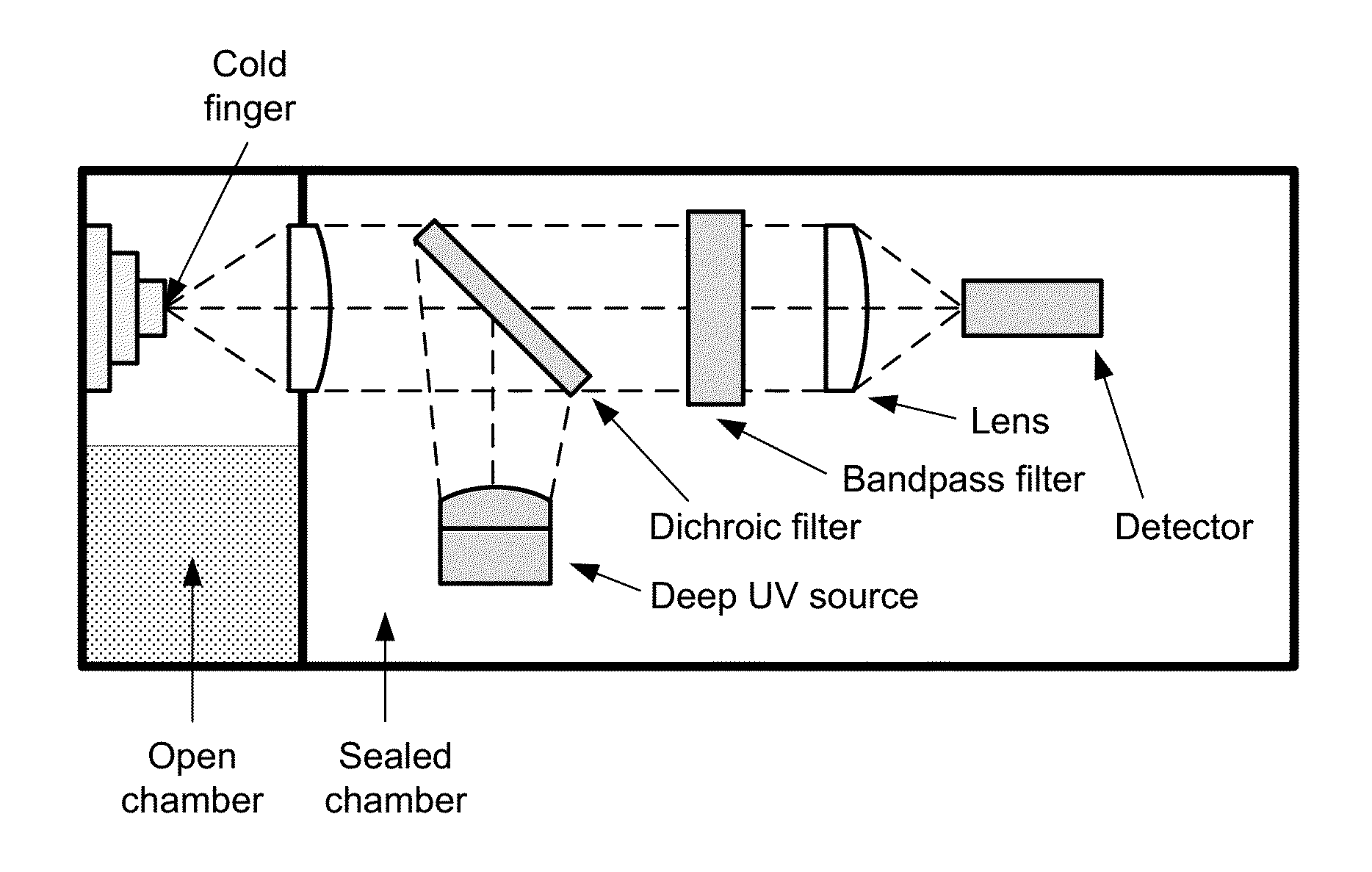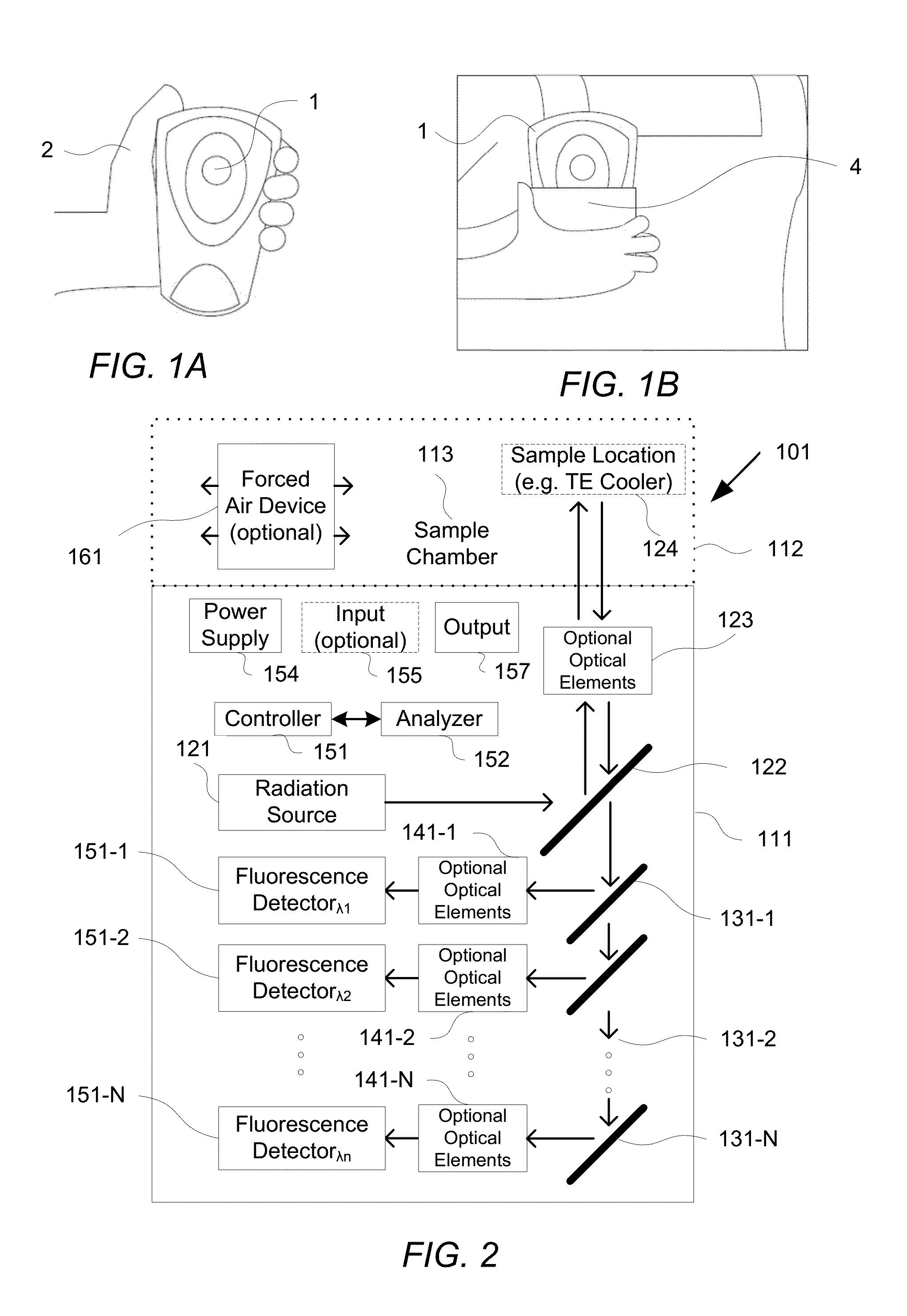Native fluorescence detection methods, devices, and systems for organic compounds
a fluorescence detection and organic compound technology, applied in the field of native fluorescence detection methods, devices, and systems for organic compounds, can solve the problems of insufficient specificity of field instruments in identifying naphthalene specifically, and none of these methods is specific to naphthalene, benzene, toluene,
- Summary
- Abstract
- Description
- Claims
- Application Information
AI Technical Summary
Benefits of technology
Problems solved by technology
Method used
Image
Examples
Embodiment Construction
[0046]Methods and sensor systems of embodiments of the invention based on deep UV (e.g. having a relative narrow band of wavelengths above 185 nm but less than 200 nm, above 200 nm but less than 280 nm, or above 220 nm but less than 250 nm) excited native fluorescence have demonstrated the ability to clearly distinguish between standard jet fuels which contain naphthalene (e.g. MAPLLC Aviation Turbine Fuel Jet A (04posf4658) fuel with about 3% naphthalene compounds) and new, synthetic fuels (e.g. S-8 Synthetic Jet Fuel (06posf5018fuel)) which contains essentially no naphthalene. Various embodiments have demonstrated sufficient sensitivity that trace amounts of naphthalene could be detected in the S-8 jet fuel (without naphthalene) but which was stored in containers where Jet A was previously stored. The embodiments have also demonstrated that naphthalene can be distinguished from other volatile organic compounds (VOCs).
[0047]Some embodiments have achieved continuous detection of nap...
PUM
| Property | Measurement | Unit |
|---|---|---|
| wavelength | aaaaa | aaaaa |
| heights | aaaaa | aaaaa |
| heights | aaaaa | aaaaa |
Abstract
Description
Claims
Application Information
 Login to View More
Login to View More - R&D
- Intellectual Property
- Life Sciences
- Materials
- Tech Scout
- Unparalleled Data Quality
- Higher Quality Content
- 60% Fewer Hallucinations
Browse by: Latest US Patents, China's latest patents, Technical Efficacy Thesaurus, Application Domain, Technology Topic, Popular Technical Reports.
© 2025 PatSnap. All rights reserved.Legal|Privacy policy|Modern Slavery Act Transparency Statement|Sitemap|About US| Contact US: help@patsnap.com



